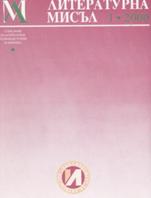Между стереотипа и действителността: Евреите в българската словесност от началото на ІХ век до Освобождението
Among the Stereotype and Reality:The Image of the Jews in the Bulgarian Literature from the Beginning of the 19th Century till the Liberation
Author(s): Olga TodorovaSubject(s): Literary Texts
Published by: Институт за литература - БАН
Keywords: Jews; literature; stereotypes; reality
Summary/Abstract: The first part of the article is a short summary of the factors that formed attitude of Bulgarian national revival people towards the Jewry. During the Revival as it was during the whole Ottoman period the negativism towards them prevailed. Thou it had its deep ground in the very Christian religion tradition, that negativism was featured by real social-economic and political motivation also - the Bulgarians were antagonized from the more privileged statute the Jewry enjoyed in the Ottoman state, from the non-agrarian “parasitic” occupation of the Jewish population, from its underlined loyalty to the sultan’s power, etc. The negativism towards Jewry was also fed with the active “import” of anti-Semitism from neighbor Orthodox countries and Russia. And at the same time for Bulgarians the 19th century was an epoch of acquiring the contemporary bourgeois values and breaking the medieval religious attitudes. That process was stimulated by the reform acts during the Tanzima period, which founded certain favorable legislation and institutional atmosphere for gradual transition of Bulgarians and Jewry from the stage of “parallel co-existing” to that of adequate, unembarrassed from religious and ethnic prejudice communication. The second part of the article systematizes and analyzes the basic motives and plots concerning the Jewish item, and its performance on the pages of our pre-Liberation literature (press, fiction, religious literature, private letters, etc.) A clear tendency of gradual overcoming of the inherited from the past anti-Jewish stereotypes can be stated. Bit even having in mind that during the Revival epoch the negative approaches towards the Jewry more and more function like prints, the author nevertheless concludes that taken as a whole the Jewry image in the Bulgarian Revival literature is too close to that of the evangelic archetype for the “wicked Jew”.
Journal: Литературна мисъл
- Issue Year: 2000
- Issue No: 1
- Page Range: 73-90
- Page Count: 18
- Language: Bulgarian
- Content File-PDF

